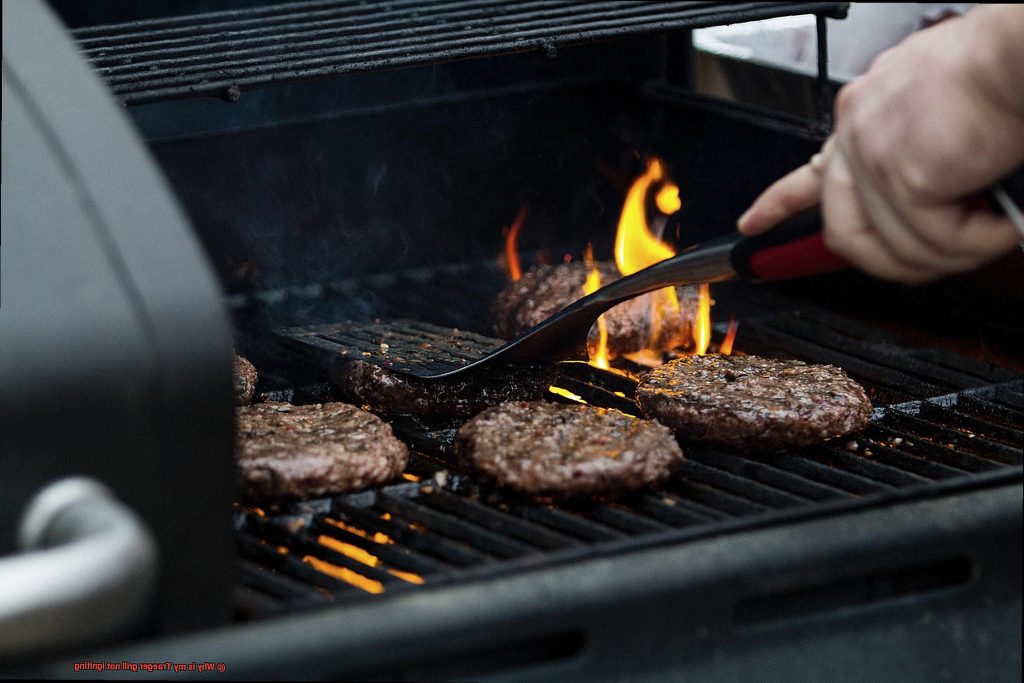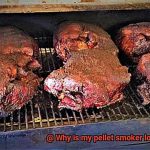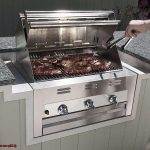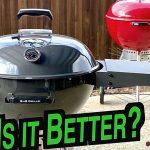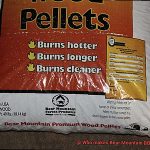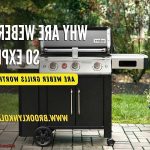Summer is finally here, and it’s time to get your grill game on for some delicious barbeque. But what happens when your Traeger grill decides not to ignite? It can be frustrating and leave you scratching your head, wondering what went wrong. Don’t worry, though – you’re not alone. The good news is that the problem may not be as complicated as it seems, and there are simple ways to get your grill up and running again in no time.
There are several reasons why your Traeger grill may refuse to light up. It could be something as basic as an empty hopper or a blown fuse, or it could be an issue with the igniter. Whatever the reason may be, there are easy troubleshooting methods that can help you fix the problem without breaking a sweat. Knowing how to diagnose the issue and resolve it will ensure that you don’t miss out on any more barbeque days.
In this article, we’ll take a closer look at some of the most common reasons why Traeger grills fail to ignite and provide practical solutions to fix them. We’ll explore everything from fuel supply issues, auger problems, hot rod malfunctions, and other components that could be causing trouble. So let’s dive in and get your grill back in action.
Contents
Overview of Traeger Grills
Traeger Grills: The Ultimate Outdoor Cooking Companion
Traeger grills have gained a reputation as the go-to outdoor cooking appliance for many grilling enthusiasts. These popular pellet grills are known for their convenience, ease of use, and versatility. Traeger grills are designed to use wood pellets as fuel. Compressed hardwood sawdust pellets are fed into the grill’s firepot by an auger, and an electric heating element ignites them.
The Traeger grill’s digital control panel is another notable feature. You can easily set the temperature and cooking time with this panel, making it simple to cook your favorite meals to perfection. The grill’s fan circulates the smoke and heat throughout the cooking chamber, ensuring even cooking and delicious flavor.
One of the biggest advantages of Traeger grills is their versatility. They can be used for a variety of cooking methods, including smoking, roasting, baking, and grilling. This makes them a great investment for anyone who loves to cook outdoors.
However, sometimes your Traeger grill may experience issues with ignition. This can be frustrating for grillers who are eager to start cooking but find that their grill won’t light up. In such cases, there are several common causes of ignition problems that can be easily diagnosed and fixed.
First, check that your grill is plugged into a working electrical outlet and that the circuit breaker or GFCI switch hasn’t tripped. Next, ensure that your hopper has enough pellets to start the fire. Fill it up with fresh pellets if it’s empty or nearly empty.
If neither of these solutions work, try cleaning the fire pot with a wire brush or vacuum cleaner. A dirty fire pot can prevent proper ignition and lead to frustrating delays in your outdoor cooking plans.
Be sure to also check that your hot rod is functioning properly and that you’re using high-quality wood pellets that are dry and free of additives or binders. If you have a gas-powered torch on your Traeger grill, inspect the gas valve, propane tank, and hose for any damage or leaks.
Common Causes of Ignition Problems with Traeger Grills
But fear not, because there are several common causes of ignition problems with Traeger grills that can be easily resolved.
The first culprit is often a dirty firepot. The accumulation of ash and debris over time can clog the firepot and prevent the pellets from igniting. To fix this issue, grab a wire brush or scraper and give the firepot a thorough cleaning.
Another possible cause is a malfunctioning hot rod. This little device plays a crucial role in igniting the pellets and if it’s not functioning correctly, the pellets won’t ignite either. Take a look to ensure the hot rod is properly connected and that there are no visible signs of damage, such as frayed wires.
Don’t forget about the pellet hopper. Without enough pellets, your grill won’t be able to ignite them properly. Keep your hopper filled at all times to avoid this issue altogether.
Lastly, a faulty temperature controller can also lead to ignition problems. If the controller isn’t sending the proper signals to ignite the pellets, you may need to double-check that it’s set to the correct temperature and working correctly.
Lack of Power
Don’t let this issue dampen your grilling game. There are several potential causes for a lack of power when trying to ignite your Traeger grill, but with some troubleshooting, you can quickly get back to cooking up mouth-watering meals.
Firstly, a blown fuse could be the culprit. High temperatures or power surges can cause this issue. To identify if this is the problem, inspect the fuse and replace it if necessary. Alternatively, a tripped circuit breaker could be the cause. This can happen if you have too many appliances plugged into the same circuit. In this case, all you need to do is reset the circuit breaker and try again.
Another possibility is a faulty electrical outlet. Make sure your outlet is functioning correctly and that there is no damage to the cord or plug. If none of these solutions work, try plugging your Traeger grill into a different outlet to see if that resolves the issue.
Lastly, check the power cord for any damage or wear and tear. A damaged cord may need to be replaced entirely. It’s crucial to use a compatible power cord with your Traeger grill to avoid any safety hazards.
Empty Hopper
We have some expert insights that could help you out.
Let’s start with the hopper – the container that stores the pellets that fuel your grill. If this essential compartment is empty, your grill simply won’t ignite. It’s as simple as that.
So, what should you do if you’re facing this issue? The first step is to check the hopper and ensure it’s not empty. If it is, add more pellets and try again. Voila, problem solved.
But what if you’ve already checked the hopper and it’s loaded up with pellets, yet your grill still refuses to ignite? In that case, it’s time to dig a bit deeper. Possible culprits include a malfunctioning igniter, a clogged firepot, or a faulty temperature sensor.
Fear not. Regular cleaning and maintenance can prevent many of these issues from cropping up in the first place. Make sure to clear out any ash and debris from previous grilling sessions and keep an eagle eye out for any potential clogs or malfunctions.
Dirty Fire Pot
Well, it all starts with a clean fire pot. You may think that cleaning this small component of your grill isn’t necessary, but let me tell you, neglecting it can cause major problems that can ruin your grilling experience.
The fire pot is a crucial component of your Traeger grill as it’s responsible for igniting the pellets and creating the heat that cooks your food. However, over time, ash and debris can accumulate in the fire pot, which can impede proper airflow and prevent ignition. This can leave you with a cold grill and uncooked food – not exactly ideal for a summer barbecue.
A dirty fire pot can also lead to uneven cooking. If the pellets aren’t igniting properly or the heat isn’t evenly distributed, your food won’t cook evenly either. Additionally, buildup in the fire pot can cause excess heat and even start a fire inside your grill – which is definitely not something you want to deal with.
To clean your fire pot, begin by making sure that your grill is cool and unplugged before starting any cleaning. Then, remove any excess pellets or ash using a vacuum or brush. Next, use a scraper or wire brush to remove any stubborn debris or buildup. Don’t forget to check the holes in the fire pot and ensure they are clear of any obstruction.
It’s also important to note that cleaning your fire pot should be done regularly to prevent any buildup and ensure proper functioning of your grill. Neglecting to clean your fire pot can lead to other issues such as uneven cooking or even damage to your grill.
In addition to cleaning the fire pot, it’s crucial to ensure that the pellets you’re using aren’t causing any issues. Low-quality pellets that contain excessive moisture or fillers can cause issues with ignition and create more ash buildup in the fire pot.
Faulty Hot Rod
Don’t let a faulty hot rod ruin your barbecue plans. The hot rod in a Traeger grill is responsible for igniting the pellets and starting the fire. If it’s not functioning correctly, it can lead to ignition issues.
One common cause of a faulty hot rod is a buildup of ash on the tip of the rod, preventing it from sparking. Another issue could be a damaged or broken hot rod. But don’t worry, troubleshooting the problem is easy.
To start with, turn off and unplug the grill before inspecting the hot rod. Then, inspect the hot rod for any visible damage or signs of wear and tear such as rust or corrosion. If there’s no visible damage, remove the hot rod and clean it thoroughly with a wire brush to remove any ash buildup. Remember, proper airflow is crucial for even cooking and to avoid potential fires.
If cleaning the hot rod doesn’t solve the issue, don’t panic. It may need to be replaced. It’s important to only use genuine Traeger replacement parts to ensure compatibility and safety. Investing in high-quality parts will save you money in the long run and keep your grill functioning properly.
But don’t stop there – inspecting the wiring and connections leading to the hot rod is also essential. Loose or damaged wires can also prevent ignition and should be repaired or replaced as needed.
By addressing a faulty hot rod promptly, you can ensure that your Traeger grill is functioning properly and ready for your next barbecue. Don’t let a faulty hot rod put a damper on your summer cookouts.
Take care of your grill by regularly cleaning and inspecting all parts. Just like neglecting to clean the spark plug in your car can lead to problems starting, neglecting your grill’s hot rod can lead to ignition issues. So stay proactive and keep your grill in top shape.
Bad Pellets
Don’t let bad pellets ruin your cookout plans. Let’s dive deeper into the issue and explore some solutions.
Firstly, old or damp pellets are often the cause of clogs in the auger system, which can prevent proper feeding and ignition. Moisture causes pellets to expand, making them difficult to feed into the fire pot. This can result in undercooked or unevenly cooked food – a definite no-no for any barbecue lover.
But wait, there’s more. The quality of the wood used to make the pellets is also crucial to proper ignition. Inferior quality wood or improperly processed wood can contain impurities that impact the burning process. This can lead to half-burnt burgers or even no burning at all.
So, how can we avoid these issues? It’s important to store pellets in a dry and cool place. If you live in a humid climate, consider using a dehumidifier for your storage area. Additionally, it’s crucial to use only high-quality pellets made from pure hardwoods that have been properly processed.
Here are some tips to tackle bad pellets:
- Clean out the auger system if you suspect it’s clogged
- Use fresh pellets instead of old ones
- Invest in high-quality pellets made from pure hardwoods
- Store pellets in a dry and cool place
By following these tips, you’ll be able to avoid issues with bad pellets and enjoy delicious, perfectly cooked meals every time. However, if you still encounter problems, don’t hesitate to reach out to Traeger customer support for further assistance.
Gas Leak
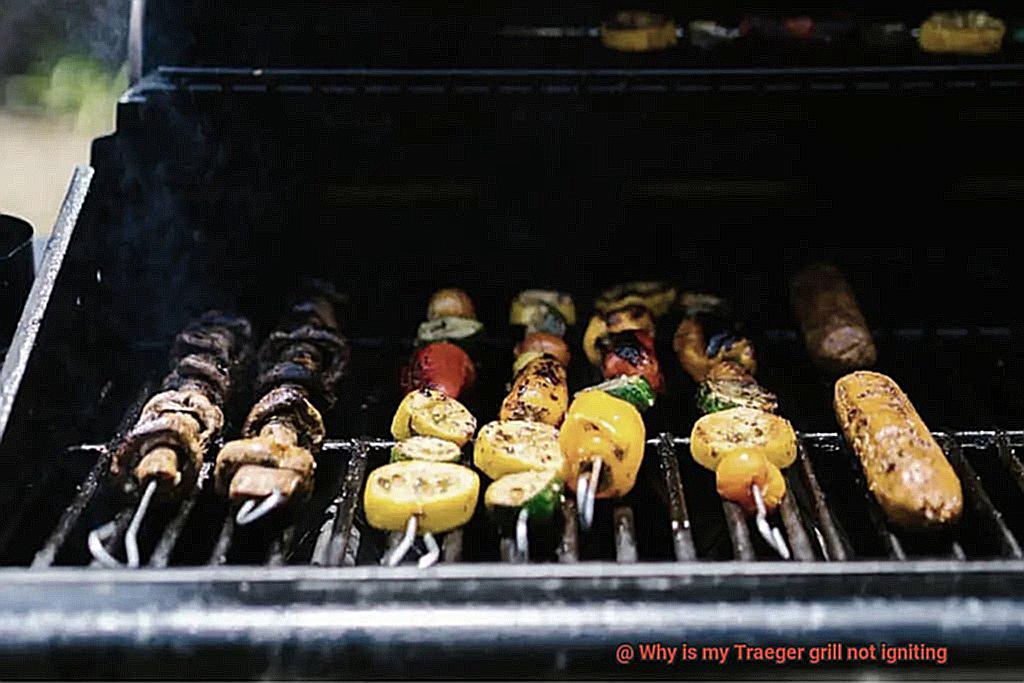
Before you fire up your Traeger grill, it’s essential to prioritize safety and check for potential hazards, such as gas leaks. With our expert advice, you’ll know how to identify and fix gas leaks immediately for a safe and enjoyable grilling experience.
First and foremost, always put safety first by turning off the propane tank and grill knobs before inspecting your grill.
Inspect the Gas Hose:
Take a close look at the gas hose that connects your propane tank to your Traeger grill. Look for any cracks or damage in the hose. If you notice any damage to the hose, replace it immediately to avoid potential gas leaks.
Tap the Regulator:
Next, tap the regulator gently with a wrench. Listen carefully for any hissing sounds, as this can indicate that the regulator is faulty and needs to be replaced.
Check for Loose Connections:
Loose connections are another common cause of gas leaks. Ensure that all connections between the propane tank, regulator, and grill knobs are securely tightened. Use a soapy water solution to check for any leaks. Apply the solution to all connections, and if you see bubbles forming, it indicates a leak that needs fixing immediately.
Gas leaks can be hazardous and pose a significant risk if not dealt with immediately. By checking your Traeger grill regularly for any signs of damage or loose connections, you can ensure safe grilling experiences while enjoying delicious meals on your Traeger grill.
Remember always to prioritize safety when it comes to grilling and don’t take any risks with gas leaks. Fix them immediately or seek help from a professional if necessary.
A949_XQJCxU” >
Conclusion
In conclusion, Traeger grills are a fantastic investment for any outdoor cooking enthusiast. With their convenience, ease of use, and versatility, they can turn any backyard into a culinary haven. However, when ignition problems arise, it can put a serious damper on your barbecue plans.
The good news is that most issues are easy to diagnose and fix with some troubleshooting. Whether it’s a dirty fire pot or faulty hot rod causing the problem, regular cleaning and maintenance can prevent many of these issues from occurring in the first place.
It’s important to ensure that you’re using high-quality wood pellets that are dry and free of additives or binders. This will help keep your grill running smoothly and prevent unnecessary ignition problems.
If you do encounter an issue with your Traeger grill not igniting, don’t fret. Start by checking the hopper to ensure it has enough pellets and that the grill is plugged into a working electrical outlet. If this doesn’t work, try cleaning the fire pot or inspecting the hot rod for any visible damage or signs of wear and tear.
And remember: safety always comes first when it comes to grilling. Make sure to check for potential hazards such as gas leaks before firing up your grill. Always turn off the propane tank and grill knobs before inspecting your grill for any damage or loose connections.
By following these tips and tricks for resolving ignition problems with Traeger grills, you’ll be able to get back to cooking up mouth-watering meals in no time.

